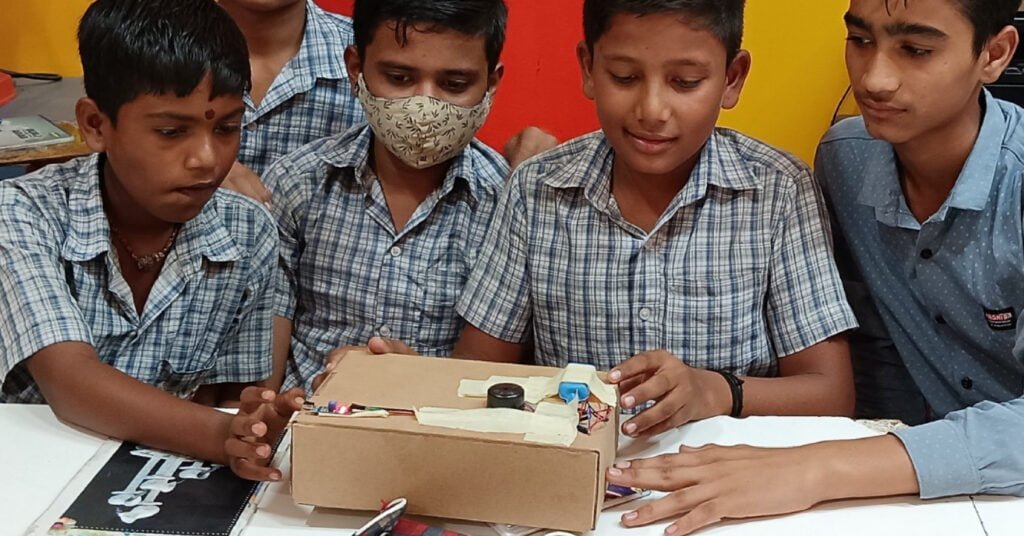Integrating STEM (science, technology, engineering, and mathematics) activities has completely changed traditional teaching approaches in today’s educational environment. A new age of interesting and productive education has begun, one in which the emphasis has changed from rote memorization to practical application.
Linking Theory and Practice
STEM activities make the connection between theoretical understanding and real-world application possible. These exercises give abstract concepts life by providing students with practical experiences. These kinds of activities help make learning concrete and approachable, whether building models to comprehend engineering concepts or doing experiments to investigate scientific hypotheses.
STEM projects place a premium on education as the foundation of their efforts. They work relentlessly to improve STEM education in schools, colleges, and institutions. This involves creating an up-to-date curriculum, improving teaching methods, and offering professional development opportunities for instructors. By providing instructors with the most up-to-date information and tools, they may successfully transfer their enthusiasm for STEM subjects to their pupils.
Developing Crucial Competencies
Participating in STEM pursuits fosters analytical reasoning and problem-solving abilities. Students face problems that call for creative fixes. Whether diagnosing a problem in a robotics project or creating plans to maximize resources in a scientific experiment, these kinds of tasks foster creativity and analytical thinking.
Innovation is frequently the result of creative thinking. STEM efforts provide an environment where people are encouraged to think beyond the box. They assist with tasks and activities that need innovative problem-solving. STEM provides a creative environment where revolutionary ideas emerge by requiring individuals to approach problems from new perspectives.
Another foundation of research and innovation is critical thinking. STEM programmes place a high value on analytical and critical thinking abilities. Students and researchers are taught to challenge assumptions, weigh facts, and make sound judgements. This necessary mindset is essential for doing rigorous research and creating novel solutions to challenging challenges.
Encouraging Cooperation and Unity
Success in the professional sphere is largely dependent on teamwork. STEM activities frequently involve group projects, simulating real-world situations where people with different skill sets come together to accomplish shared objectives. Pupils discover the value of delegating tasks to one another, communicating effectively, and utilizing individual abilities to achieve group goals.
Creating a Passion for Education
The practical application of information in STEM activities sparks a love for learning. Exuberance and interest are sparked when tangible results, like a working robot or a successful coding project, are observed. This innate drive propels an unceasing pursuit of understanding and investigation.
Hands-On Learning STEM programmes aggressively promote hands-on learning. This includes giving students and researchers access to cutting-edge facilities, equipment, and technology. Individuals gain practical insights into scientific topics and engineering principles via hands-on experimentation. They learn not only from textbooks but also through actively participating in their study materials and activities.
Improving Preparedness for Careers
In today’s work environment, proficiency in STEM subjects is highly coveted. Students participating in STEM activities acquire knowledge and abilities essential for future employment. A career in science, engineering, technology, or any other profession benefits greatly from the problem-solving skills and technical expertise gained via STEM activities.
Accepting Failure as a Chance to Learn
STEM-related activities foster an environment that is favourable to experimentation. Pupils discover that experiencing failure is a necessary component of learning. Setbacks are not something to be feared but are seen as chances for development, grit, and betterment.
Promoting Inclusivity and Diversity
STEM pursuits embrace diversity and are inclusive. They give students with different backgrounds and skill levels equal chances to participate and contribute actively. Diversity promotes a variety of viewpoints and ways of problem-solving, which enriches the learning environment.
In a Nutshell
Including STEM activities into the classroom is essential to developing well-rounded people who have the knowledge, perspective, and flexibility required to prosper in a changing world. STEM activities provide students with real-world experiences that enrich their academic knowledge and help them develop vital life skills that go well beyond the classroom. In order to equip the next generation for success in a world that is always changing, it is imperative that we embrace the potential of experiential STEM education.




